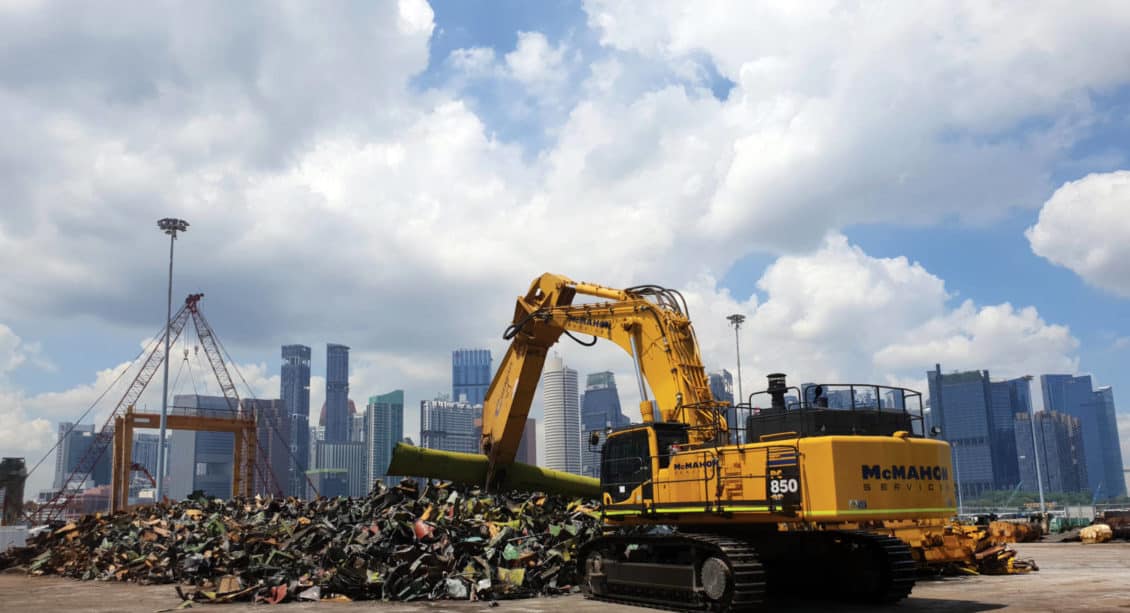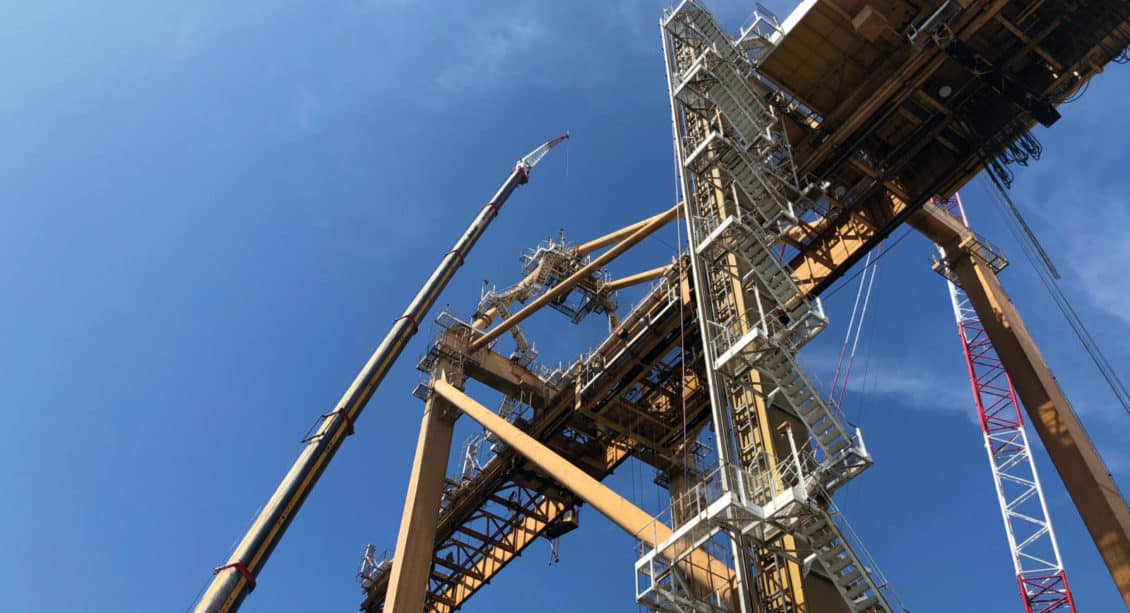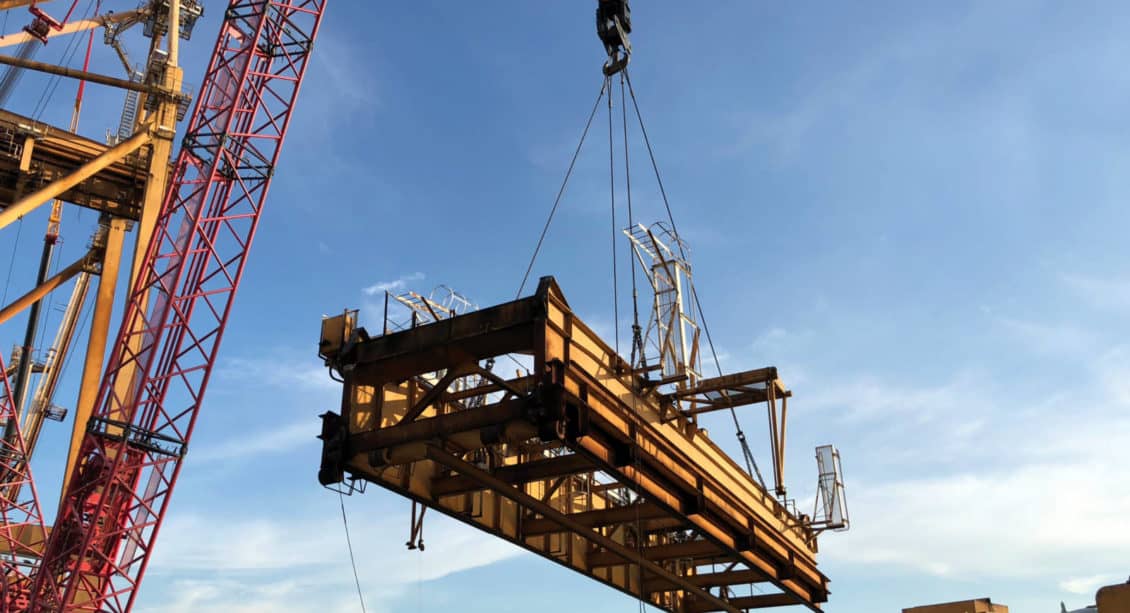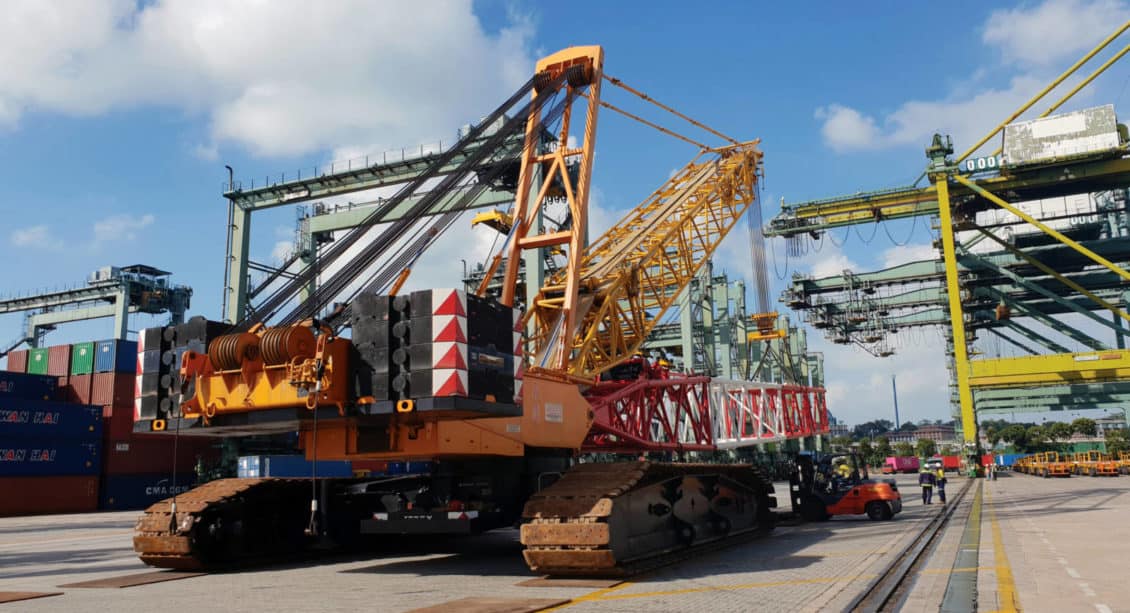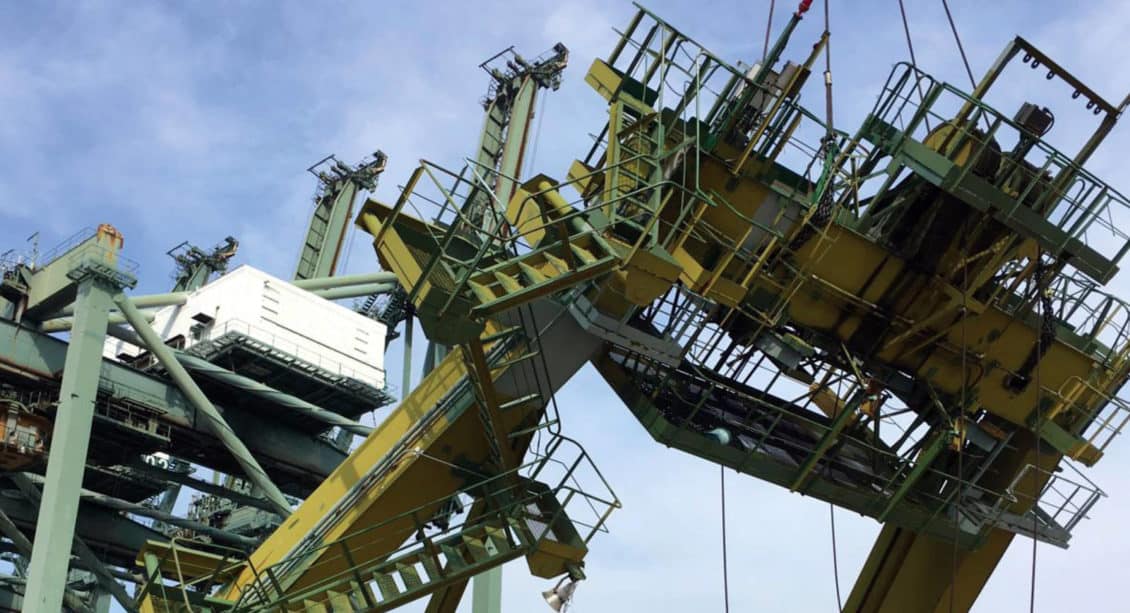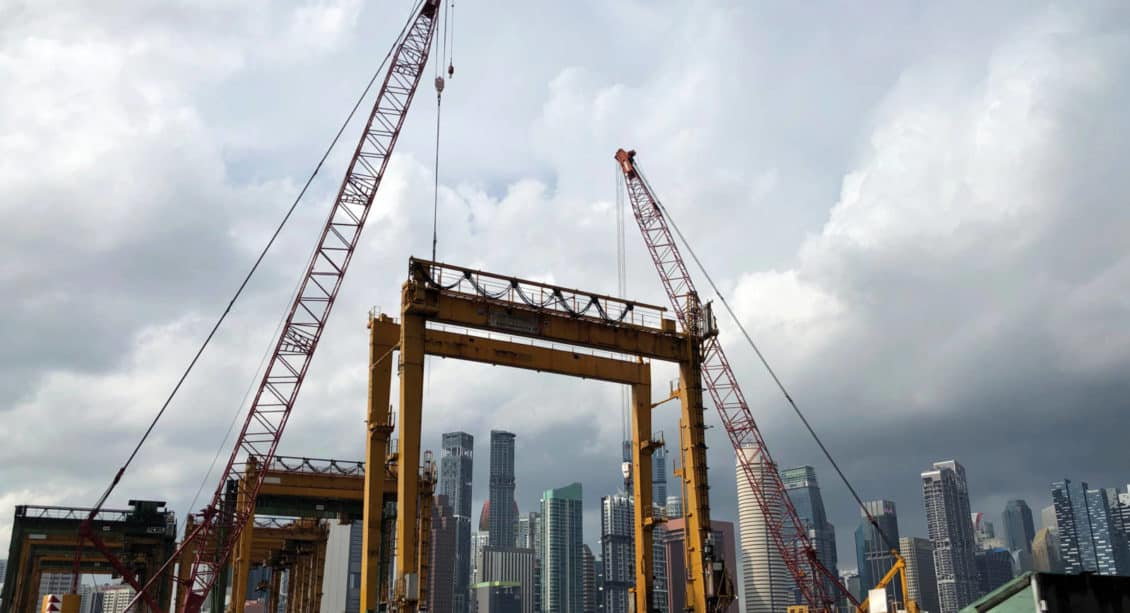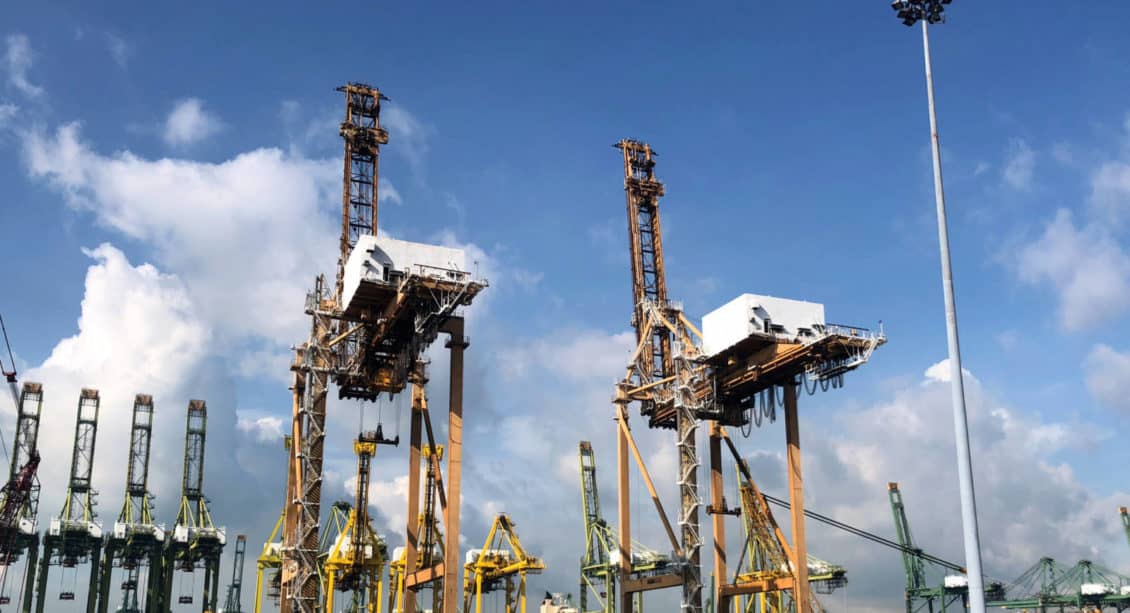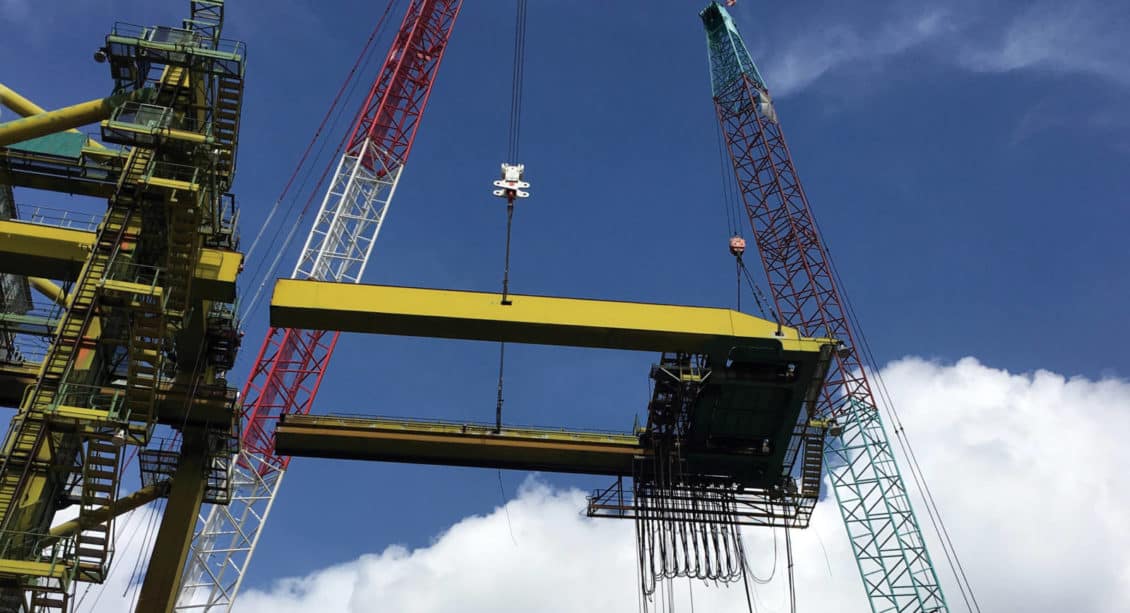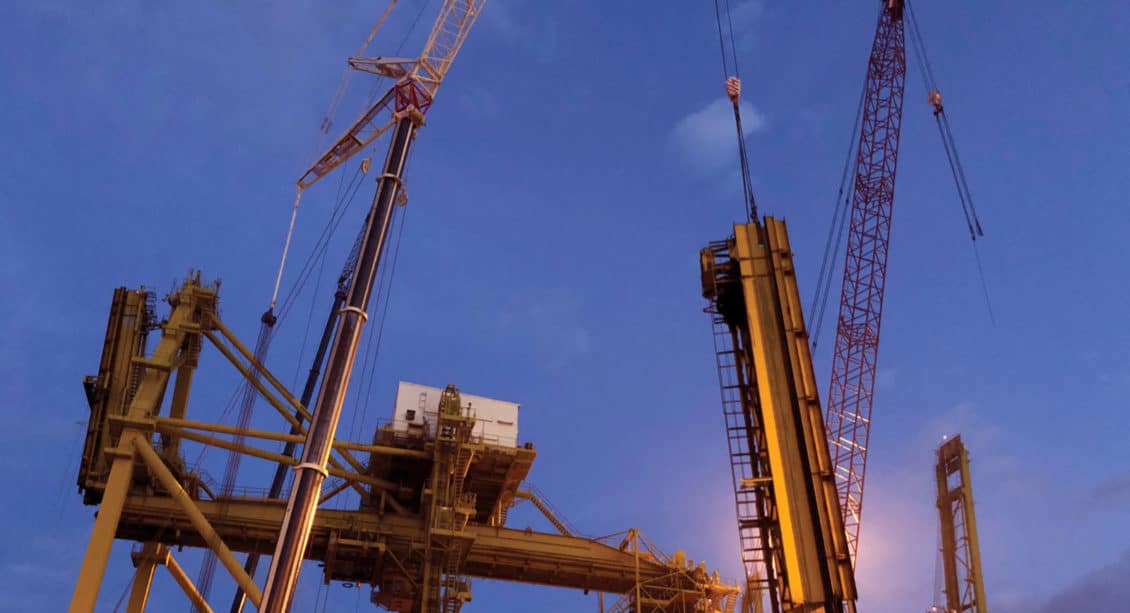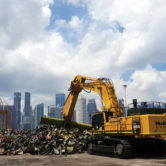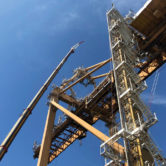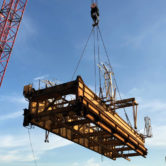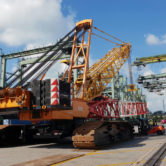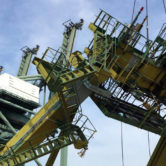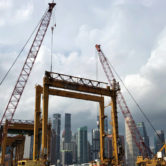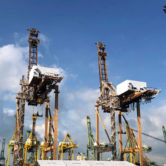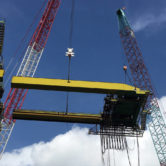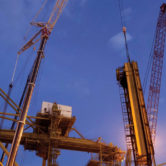Project Overview
PSA Singapore is one of the world’s largest port operators and operates 67 berths at its container terminals in Tanjong Pagar, Keppel, Brani, and Pasir Panjang.
PSA Singapore is in the process of consolidating its port operations at Tuas Port. When completed in 2040, Tuas Port will be able to handle up to 65 million standard-sized containers. It will house all of Singapore’s container activities, running on emerging technologies, automation and data analytics. This will make Tuas Port the world’s single largest fully-automated terminal.
In 2017, PSA commenced relocation operations from its city terminals to Pasir Panjang Terminals, which will host port activities until some volumes are handled at the first berths at Tuas Port, which are operational in 2021. The lease for Pasir Panjang Terminals will run out in 2040.
The lease for Singapore’s three city terminals – Tanjong Pagar, Keppel and Brani – expires in 2027, and the land that will be freed up will be redeveloped as part of the Greater Southern Waterfront project, a sprawling 1,000ha area with mixed land uses.
GoIndustry engaged McMahon Services Asia Pacific to undertake deconstruction and scrapping works for the Tanjong Pagar, Keppel and Brani terminals as part of the larger relocation project.
Scope of Work
The deconstruction and metal salvaging project scope included 12 quay cranes, 26 rubber tyred gantry cranes and three rail mounted gantry cranes. A further seven quay cranes were awarded in February 2019. The multiple work area project was undertaken inside one of the world’s busiest ports requiring detailed and stringent deconstruction methodologies. Over 200 major crane lifts were undertaken during dismantling works.
The deconstruction and scrapping of quay and gantry cranes were McMahon Services’ first project in Asia. It achieved a delivery production rate with 21,000t of scrap dismantled and processed in a tight eleven-month period. McMahon Services’ on average removed over 100t per day during lifting operations.
Innovations
High risk cranage deconstruction works
McMahon Services undertook the dismantling of 11 different model cranes from six different manufacturers. The largest of the cranes weighed up to 872t with a vertical height of 101m. Each crane required detailed inspection and planning to undertake the safe deconstruction and salvage. The deconstruction method required a high-risk cranage solution. Significant structural engineering reviews were undertaken to determine the capacity of the wharf structures to undergo the loads applied during lifting operations. Detailed crane lift studies were developed and approved for each crane lift operation.
The process for removal included substantial oxy-cutting and cold-cutting of wire, cables and subsequently structural members. Each section of crane was lowered to the ground level by various cranes including:
- Demag CC2800 600t crawler cranes with a boom length of 114m
- Kobelco 7250-2F 250t crawler cranes
- Demag AC700 700t mobile crane
- Demag AC500-2 500t mobile crane
- Kobelco CKE1800-1F 180t crawler crane
- Grove GMK6300L 300t mobile crane
- Liebherr LTM1200-5.1 200t mobile crane
- Demag AC160-2 160t mobile crane
Each crane was used at separate times with three cranes supplying each active worksite. At the peak of project there were three active worksites where dismantling and processing work was occurring. Due to the tight schedule both crawler cranes and mobile cranes were used effectively in undertaking high-risk heavy lift dismantling works.
The larger cranes were used for the dismantling of the quay and gantry cranes whilst the smaller cranes were utilised predominantly to carry the man cage allowing safe access for our personnel to the highest reaches.
McMahon Services engaged design firm WGA to undertake detailed analysis designs to ensure the deconstruction sequence did not compromise centre of gravity maintenance within the four main legs of the structure. This ensured the stability of the remaining structure at all times.
Scrap metal and hydrocarbon recycling
McMahon Services utilised in house assets to process all ferrous and non-ferrous metals for export including the use of the following:
- Komatsu PC850 excavator with a Genesis 1555R shear
- Komatsu PC500 with a LaBounty shear
- Komatsu PC450 excavator with a Genesis 995R shear
- Sennebogen 835E material handler
To supplement the team of McMahon excavators’ local providers were utilised for small plant and equipment.
McMahon Services booked two vessels with a consignment of 10,000t each for transport of scrap metal to a buyer in Vietnam. Plans were undertaken to allow the ship to berth directly at site. Both vessels were loading for 24-hour shifts to allow the vessel to reach the buyers in the minimum amount of time.
Overall the project deconstructed and recycled 19,600t of ferrous metal. 37 shipping containers of non- ferrous materials were recycled and reused including hydrocarbons such as grease and transmission fluids.
The project achieved a 99% recycling rate. McMahon Services salvage all possible items such as gearboxes and generators that were then sold on to the international market. The total work days for the project at completion was 296 days.
Safety Performance
In order to deliver the high-risk works safely, McMahon Services become safety accredited to Singapore’s, BizSafe 3 accreditation. In addition to becoming BizSafe 3 accredited, McMahon Services followed the further stringent safety requirements as set out of by the client in the secure port facility. This culminated in the creation of a safe work environment. McMahon Services safety system brought the legislative requirements of Singapore in with the safety systems already developed throughout Australia and New Zealand.
The project featured many risks including working at heights, objects falling from heights, operation of heavy plant on suspended slabs, working in a live port, and working over water. Other risks included stored (potential) energy, line of fire risks when dismantling structures at height, and the safe transportation of large scrap loads within the port facility to the processing area.
Further risks to the project included adverse weather events. Singapore on average has 168 lightning days per year. With each square kilometre of the island being struck by lightning up to 17 times annually, Singapore is considered one of the lightning capitals of the world. During periods of lightning, all work ceased and work crews retreated to lightning protected containers until the storm passed.
Key McMahon Services personnel with detailed knowledge of deconstruction and McMahon Services safety systems were relocated from Australia to deliver the works. McMahon Services engaged Tiong Woon Project and Contracting as our crane partner providing local high-risk project delivery expertise and ensuring a local Singaporean workforce supported by a foreign labour force.

